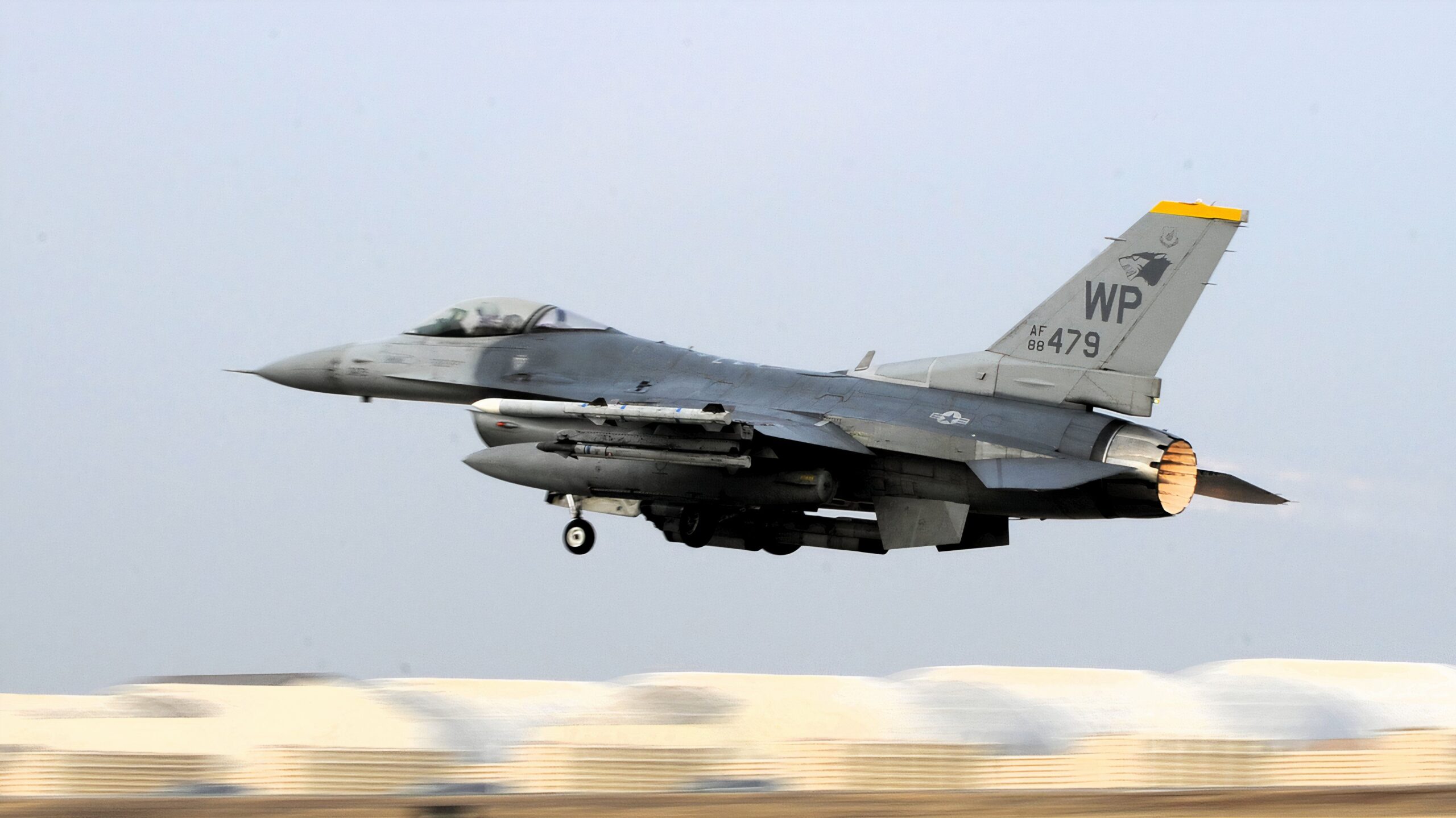Recently, the United States Air Force (USAF) released an accident investigation report into the loss of a Lockheed Martin F-16CM Block 40 Viper with serial number 88-0479—pictured above—on December 11, 2023. The loss of the F-16
shows the importance of having reliable instruments in all aircraft.
A Viper takes off after accumulating instrumentation issues
A review of the accident investigation board report into the loss of F-16CM 88-0479 shows that the F-16CM of the United States Air Force’s 35th Fighter Squadron, based out of Kunsan Air Base, South Korea, started to have instrumentation issues on startup for an early morning training flight in the Korean rain. The pilot – who had 364.9 hours of F-16 flight time this day – did not report feeling rushed in preparing to fly the sortie. Since a GPS signal could not penetrate the Kunsan hangar to help align the Embedded Global Positioning System Inertial Navigation System (EGI), the pilot entered the hangar’s GPS coordinates. That’s when an issue with the GPS’ ability to receive a precision code arose – but a ground crew person helped restore the GPS to full ability before the pilot taxied out.
One should note that it’s normal to get a fix on a position to help support navigation equipment. A guide to such is below:
However, waiting to take off, the last pilot of 88-0479 noticed the standby attitude indicator (SAI) was starting to drift. According to accident investigation board interviews, this is common to F-16 pilots, at least those based out of Kunsan, and there is a standard procedure for re-caging the instrument. However, on takeoff, the SAI drifted again, requiring another correction.
The Viper’s modular mission computer crashes
16 minutes into the flight, the F-16 Viper’s modular mission computer (MMC) crashes or has a “fail”. At the same time, another F-16 in the flight had an engine issue while the flight was in instrument conditions. With the MMC crashing, everything from radar information to horizontal data to attitude plus altitude data can be lost from the head’s up display (HUD).
This led to reliance on the SAI for attitude data—the very same piece of standby instruments that the pilot had to correct several times. Meanwhile, the navigation system also failed in-flight. Of course, the autopilot would be unusable. But the pilot attempted to descend and have his wingman be trail formation to prioritize a rejoin over any avionics fix while flying in the cloud – in part because reaching the switches for the navigation system would require turning the head plus torso while letting go of the control stick. Clearly dangerous in instrument conditions without proper attitude information.
Attempting to fly in such conditions, the pilot was relying on the SAI and on the wingman’s radar tracking to hopefully be able to navigate and aviate back to Kunsan Air Base. However, with a call-out from the wingman of being at 3,000 feet above sea level – the pilot was attempting to level wings or level out. Nonetheless, the SAI said the F-16 was climbing while the altitude data available to the pilot indicated a continued descent. By 2,300 feet above sea level, according to the F-16’s remaining altitude data, the pilot decided to eject.
The ejection itself
However, the Collins Aerospace ACES II seat indicated an actual ejection altitude of 1,731 feet above sea level as each ACES seat – both ACES II and ACES 5, profiled by Simple Flying last June, come with altimeters.
Worth keeping in mind that Andy Auer, Director of Marketing and Business Development for Collins Aerospace, while being interviewed for the above June profile, shared,
“Our timing for our seats is in milliseconds. So, you know, once you pull the handle, it probably takes about three-quarters of a second to get out of the aircraft.”
A difference of roughly 569 feet in altitude between the decision to eject and the actual ejection shows that the F-16’s altitude data was faulty. Even without the Crash Survivable Memory Unit (CSMU, black box) being recovered – it’s still in the Yellow Sea. Additionally, according to the accident investigation report, the ACES II seat was inspected incrementally every 30 days, 12 months, and 36 months for any faults. The beacon onboard the ACES II seat was set to automatic, and with clouds down to 500 feet above sea level, the beacon became critical to finding the pilot. A Republic of Korea (South Korea, ROK) Navy warship retrieved the pilot, and a ROK Coast Guard helicopter transferred the ejected pilot to Kunsan Air Base from the Korean warship.
Bottom line: Statement of opinion highlights the need for reliable instruments
At the end of the accident investigation board report is a statement by the accident investigation board president in USAF Colonel Philip D. Lancaster. Colonel Lancaster found that,
“By a preponderance of the evidence, the cause of the mishap was an EGI failure while in Instrument Meteorological Conditions or IMC. The malfunctioning EGI led to a loss of primary flight and navigation instruments.”
Additionally, the pilot’s reliance on the malfunctioning SAI and spatial disorientation led to the loss of the F-16CM. With over 100 years since the first round of world flight, the significance of accurate instruments has increased.


